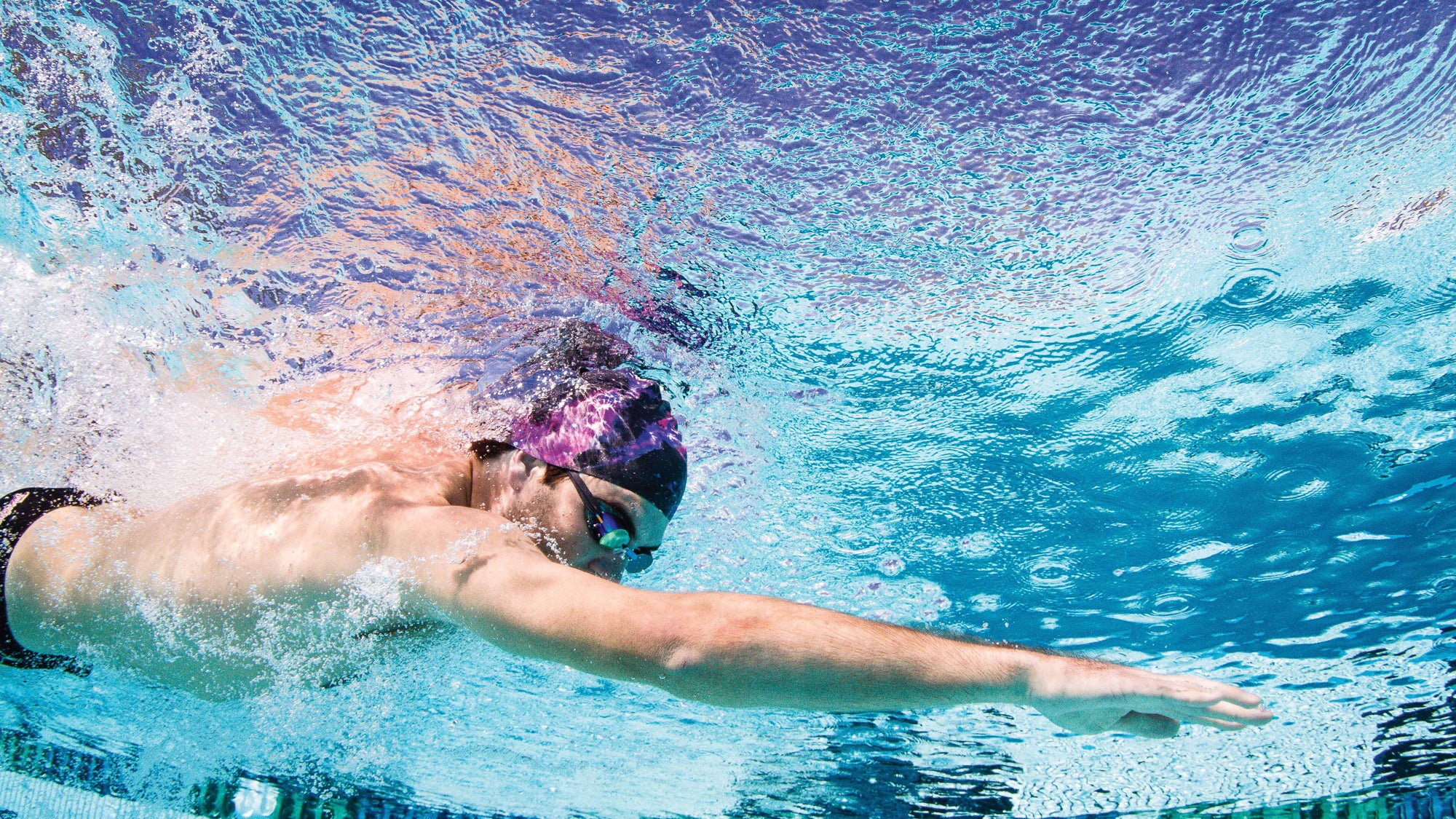How to Successfully Execute a Swim-Focused Block

Photo: John David Becker
Coaches will often include a swim block for athletes in the off-season or in a base-building phase, which is common due to swimming’s low-impact nature. You can build aerobic conditioning and do a heavy amount of volume without hurting your joints. Swim blocks are also effective while recovering from injury or returning to sport after an extended absence for the same low-impact, high-aerobic reasons.
Train like a swimmer
In order to become a better swimmer, cyclist, and runner, you can benefit by training and thinking like a single-sport athlete. The biggest difference between swimmers and triathletes is session frequency. By increasing the number of weekly practices and reducing the time spent out of the water between sessions, a triathlete can develop a better “feel” for the water. Feeling the water is swimmer-talk for the improved awareness of how you hold and move your body through the water.
How to structure your swim block
A well-designed swim block will involve more than just increasing your training frequency and total yardage. Every lap must be performed with a specific purpose and goal in mind for improvement. There is no room for garbage yardage and mindless swimming. Instead, fill the pool time with structured sets that focus on distance per stroke, pacing, efficient body position and other personalized key objectives. Keep the attention on stroke development and not on hard efforts. This slower but purposeful swimming will allow for stroke changes to be made and endurance to be built.
When preparing for a one-month training block, start by calculating your current average weekly yardage to find a base. In the weekly training guide on the opposite page, I used an example of an athlete who swims three times per week for a total of 7,500 yards. Knowing your base is important to prevent overuse injuries by increasing too much or too quickly.
Bump up your yardage 20–25 percent in the first week by adding one additional swim session. The second week has another 20–25 percent increase from the first week by lengthening each session. The most important aspect of the third week is a slight decrease in total yardage. This reduction is key because it allows the body to adapt and recover, as well as return to a bit of speedwork. The fourth and final week of the block is another 20–25 percent increase in yardage and, if possible, adding one additional training session.
Any triathlete can benefit from adding a swim block to his or her training schedule (always consult your coach if you have one). Any change in a regular training routine is good for achieving breakthroughs. Make a personalized plan that includes frequency, yardage, and specifies what objectives you will focus on during the training.
Is a swim block for you? Yes, if you’re …
- Cross-training due to injury
- Looking for an early-season focus
- Building a base for spring
- Coming back from an extended break
- Getting into triathlon from a running or cycling background
- Looking for a breakthrough
- Preparing for an iron- or ultra-distance race
Training objectives:
- Increase distance per stroke
- Improve pacing over long distance
- Strengthen core and rotation
- Transfer power from core to stroke
- Maintain horizontal body position
- Keep heart rate below lactate threshold in Zone 3
Weekly training guide
Based on an athlete who averages 7,500 yards in 3 swims
Week 1
25% increase from average (for total of 9,500) in 4 swims
Workout 1: 1500
Workout 2: 2000
Workout 3: 2500
Workout 4: 3500
Week 2
25% increase from Week 1 (for total of 11,500) in 4 swims
Workout 1: 2000
Workout 2: 2500
Workout 3: 2500
Workout 4: 4500
Week 3
10% decrease from Week 2 (for total of 10,500) in 3 swims
Workout 1: 3000
Workout 2: 3000
Workout 3: 4500
Week 4
20% increase from Week 3 (for total of 12,500) in 4–5 swims
Workout 1: 2000
Workout 2: 2000
Workout 3: 3500
Workout 4: 5000
Workout components to include:
– Long warm-up including technique drills
– Pulling sets with a bilateral breathing focus
– Steady pace sets within Zone 3
– Short speedwork followed immediately by endurance swim
– Cool-down with a purpose, limit mindless yards